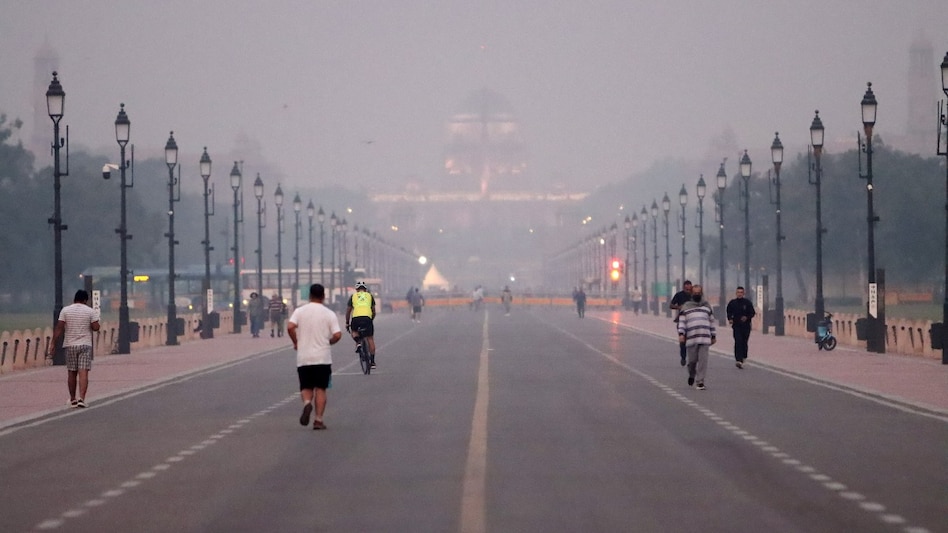 A slight drop in temperature in the recent days has been noticed in the Delhi-NCR, which has triggered a troubling rise in air pollution.
A slight drop in temperature in the recent days has been noticed in the Delhi-NCR, which has triggered a troubling rise in air pollution.  A slight drop in temperature in the recent days has been noticed in the Delhi-NCR, which has triggered a troubling rise in air pollution.
A slight drop in temperature in the recent days has been noticed in the Delhi-NCR, which has triggered a troubling rise in air pollution. As the Diwali festivities draws to a close, the much-anticipated winter chill remains elusive in the Delhi-NCR despite a slight drop in temperature in the recent days, which has triggered a troubling rise in air pollution.
India experienced its warmest October since 1901 with mean temperature recording 1.23 degrees Celsius above normal. November will remain warm without any indication of the upcoming winter, the India Meteorological Department (IMD) said.
The mean temperature in October was recorded at 26.92 degrees Celsius, the warmest since 1901, against the normal of 25.69 degrees Celsius, IMD Director General Mrityunjay Mohapatra said on November 1. The minimum temperature also clocked 21.85 degrees Celsius against the normal of 20.01 degrees Celsius for the country as a whole.
Winter in Delhi usually begins in late November or early December and ends in the first week of March.
Mohapatra attributed the warmer weather to the absence of western disturbances and influx of easterly winds due to active low-pressure systems in the Bay of Bengal.
“In north-western India, north-westerly winds are needed for lower temperatures. The monsoonal flow was also there that does not allow fall in temperature,” he said.
As per the forecast, temperatures will continue to remain 2-5 degrees above normal in the north-western plains at least for the next two weeks, before a gradual decline.
The weather office does not count November as a winter month and only considers January and February as winter months, while the hints of the cold weather are available in December.
The delay in the onset of cold weather conditions is also likely on account of the continued prevalence of the neutral El Nino conditions in the equatorial Pacific Ocean.
The weather office said the probability forecast indicates a higher chance of La Nina conditions developing during November-December in a gradual manner.
“ENSO (El Nino–Southern Oscillation) conditions are slowly evolving towards the negative side and La Nina can set in by December,” Mohapatra said, adding that the weather agencies across the world got El Nino forecasts wrong this year.
In the winter months, the La Nina causes a very cold wave-like jet stream to flow across Afghanistan, Iran and the Hindu Kush mountains. These strong and cold winds impact the degree of cold in India.
La Niña, a climate phenomenon associated with the cooling of ocean surface temperatures in the central and eastern equatorial Pacific, often brings good monsoon rains to the Indian subcontinent. However, despite predictions from global models, La Niña remained absent during the southwest monsoon months this year.
Earlier, the IMD hinted at the possibility of a severe winter in north India, especially in the northwest and central regions, including Delhi-NCR. This forecast is linked to the potential development of La Niña conditions during October and November.
In the years of La Niña phenomenon colder-than-normal temperatures is usually seen in northern India, particularly in the northwest and adjoining central regions leading to possible cold waves during the winter.
Meanwhile, in the southern peninsula, the north-east monsoon is expected to bring above normal rainfall in November in Tamil Nadu, Puducherry and Karaikal, Coastal Andhra Pradesh and Yanam, Rayalaseema, Kerala and Mahe and south interior Karnataka.
“The above normal to normal rainfall is likely over most parts of the country except northwest India and some areas of central India,” IMD said.